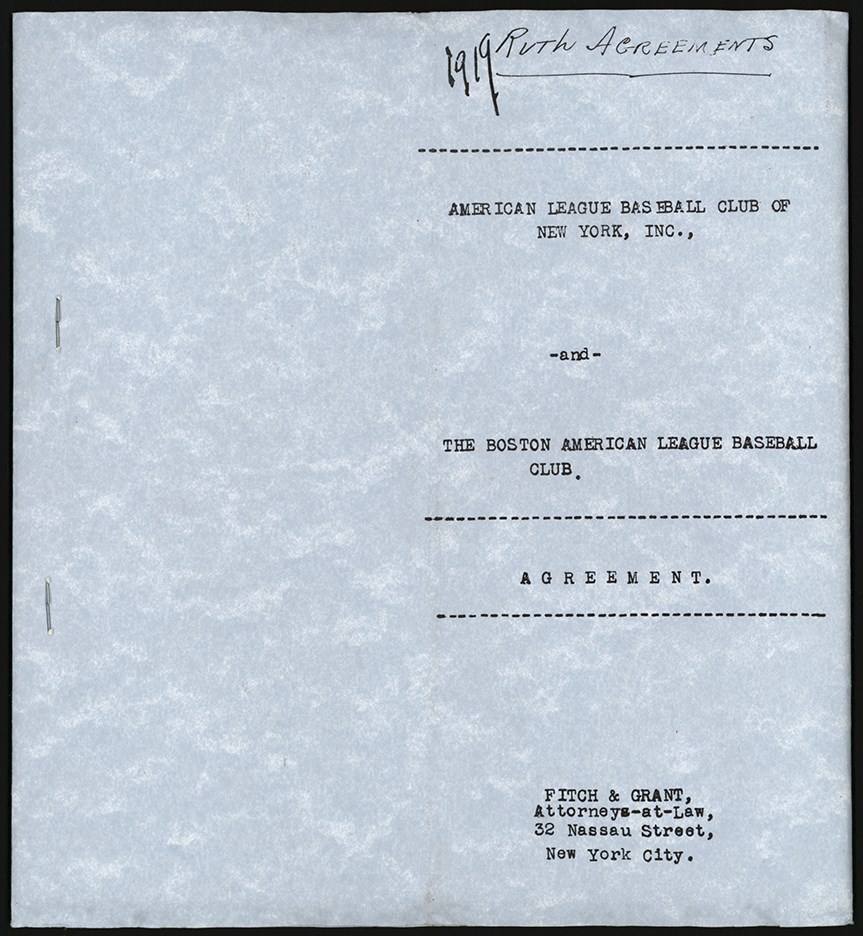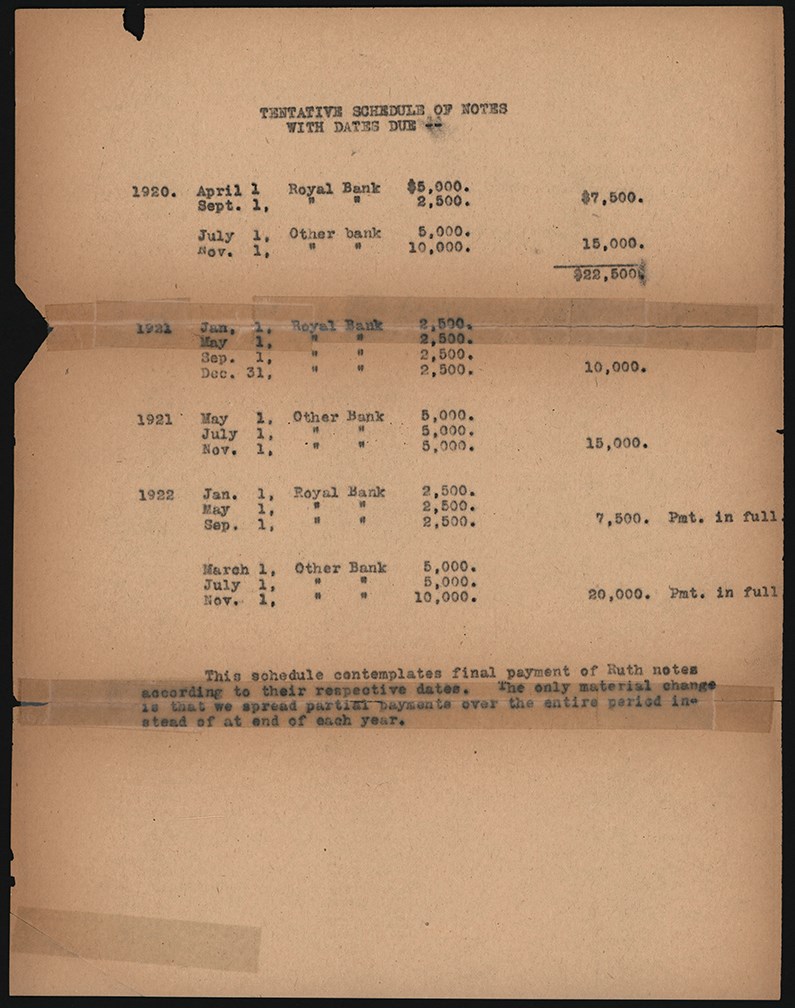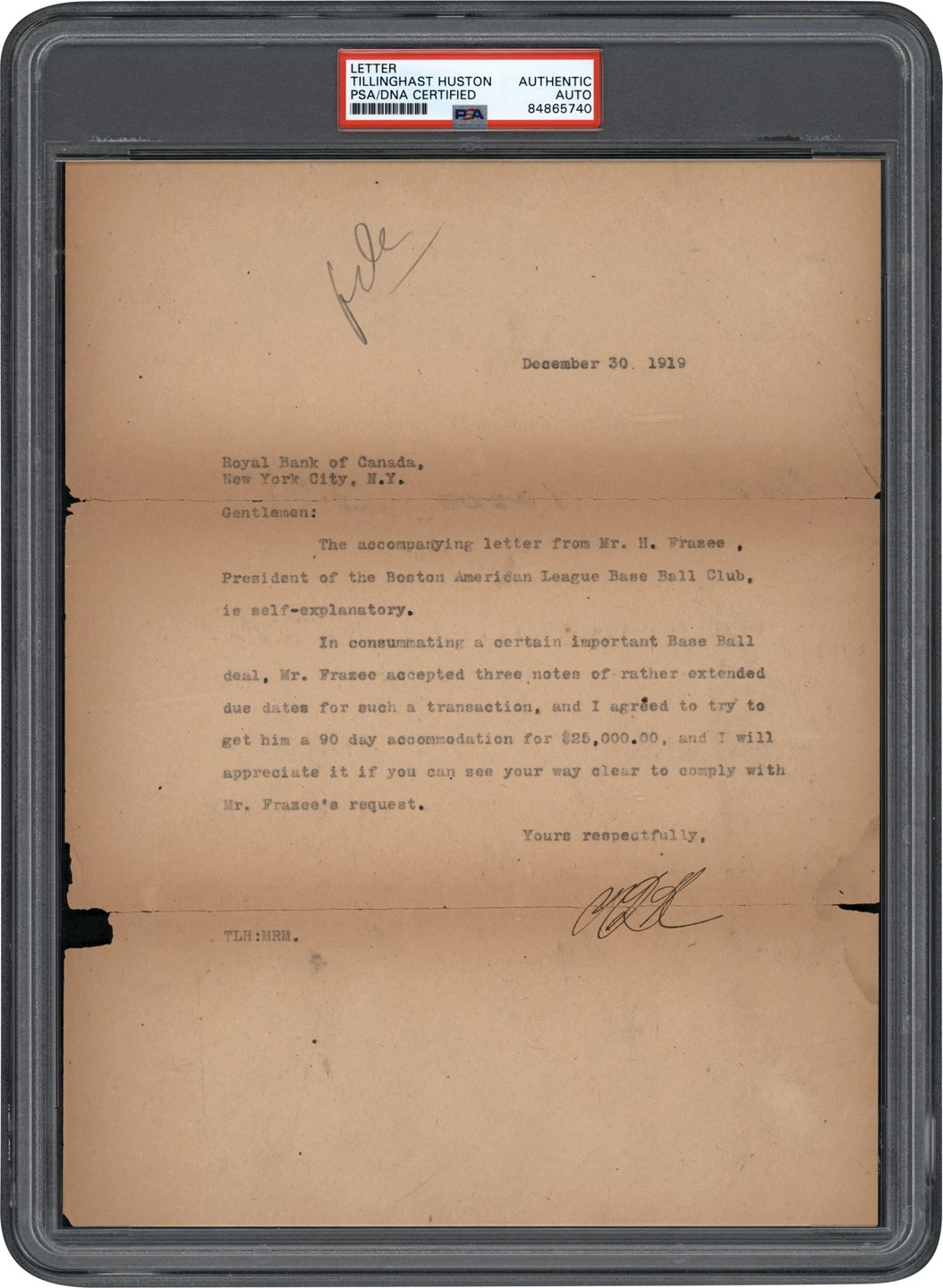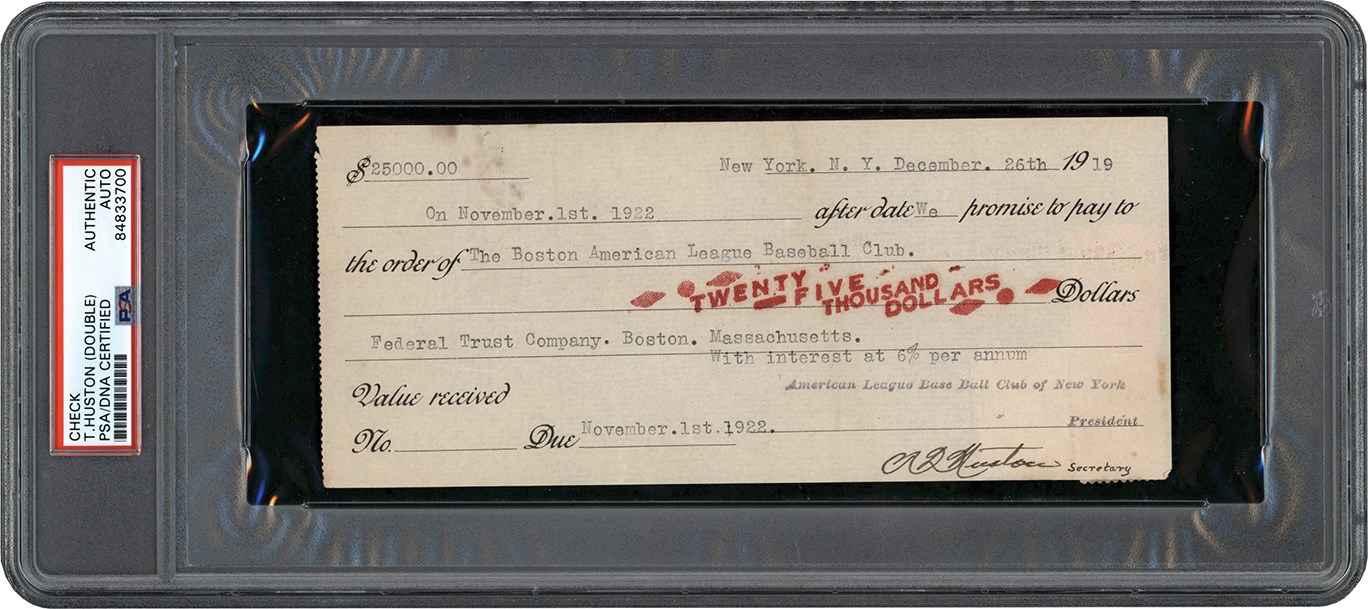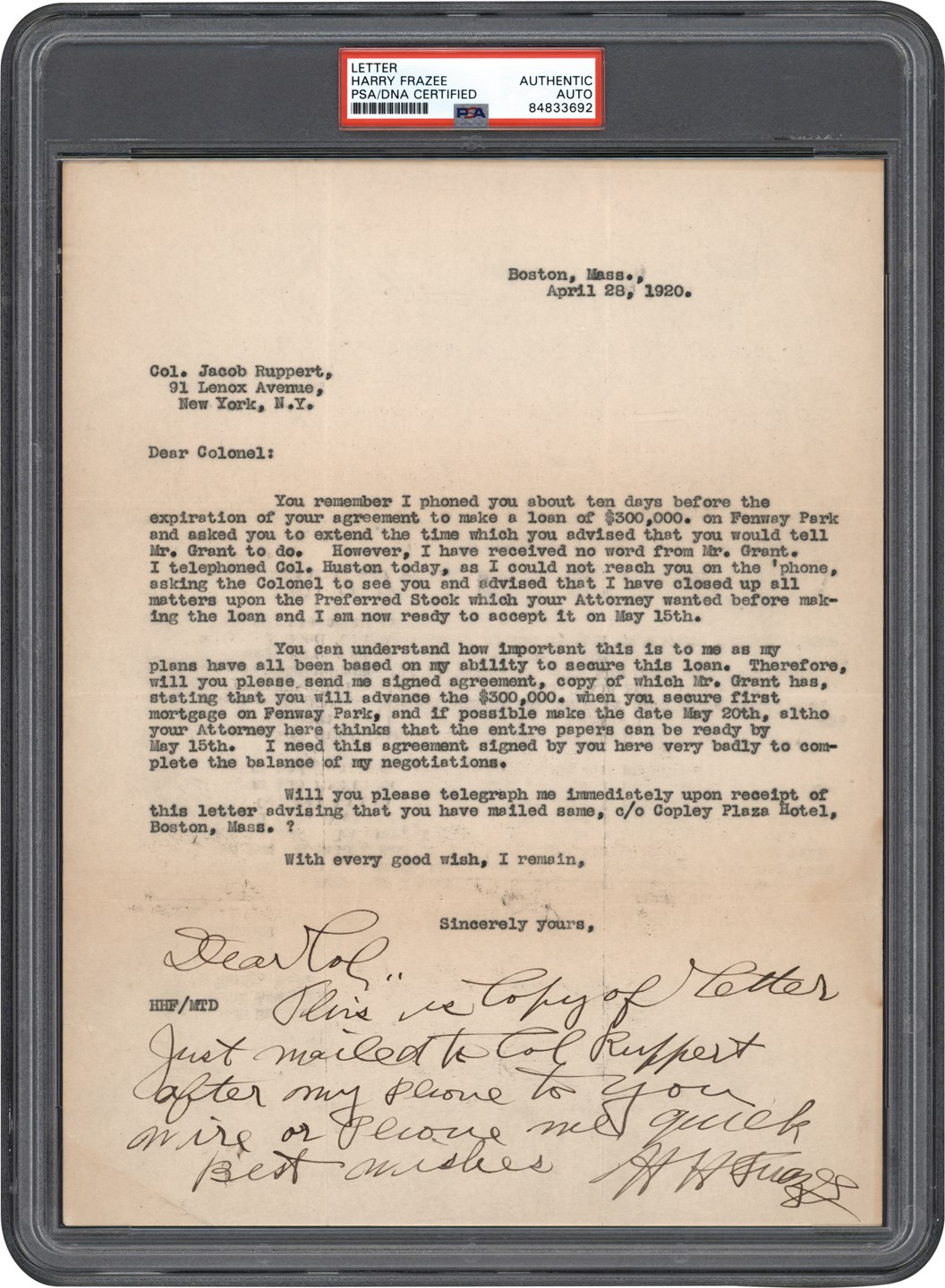Consign Your Best Items with Lelands. We Also Pay Cash on the Spot! Learn More Here.
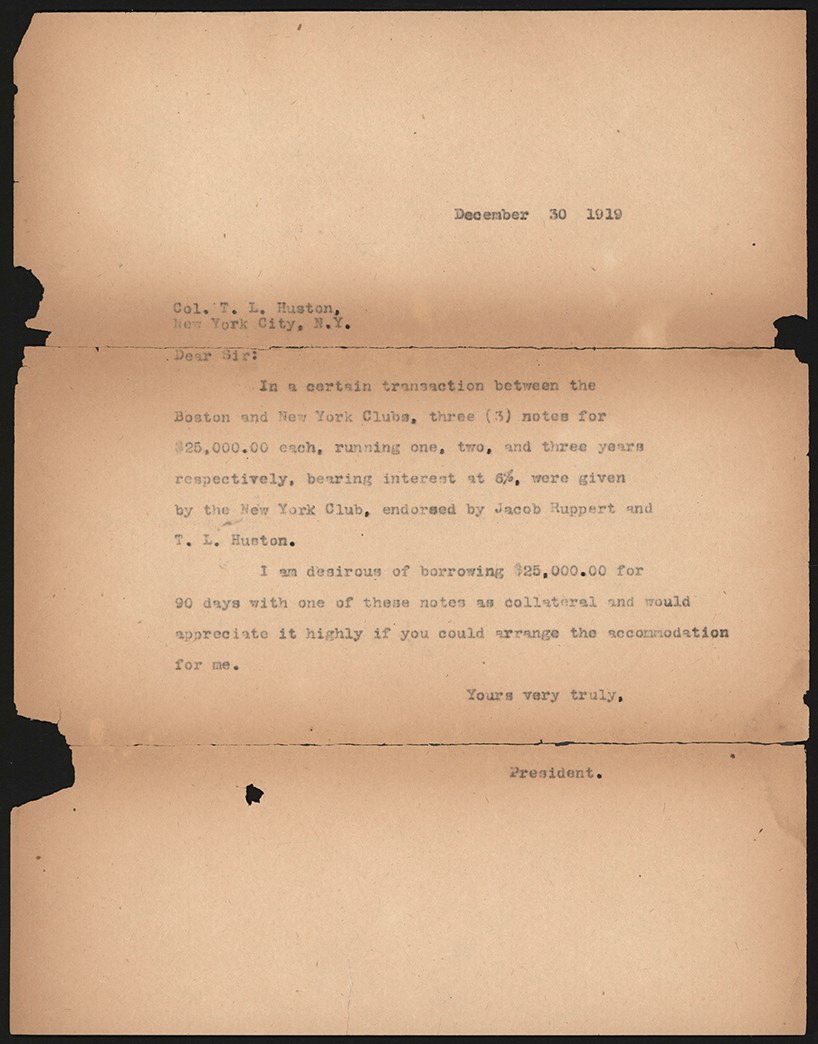
ecember 30th, 1919, Harry Frazee Letter to Colonel Tillinghast Huston Referencing "A Certain Transaction Between the Boston and New York Clubs" aka The Sale of Babe Ruth (ex-Halper Collection)
<p>One-page typed file-copy letter, dated December 30, 1919, from Harry Frazee, owner of the Boston Red Sox, to New York Yankees co owner Colonel T. L. Huston, referencing the historic sale of Babe Ruth's contract just four days earlier. What makes this letter so interesting is that even though the Red Sox sold Ruth's contract to the Yankees on December 26, 1919, the deal wasn't announced to the public until January 5, 1920. Only the main principals of each club were aware of the transaction at the time of this letter, and it was important to both parties that the details weren't "leaked" to the press prior to the official announcement. Here in his letter, Frazee discreetly references the sale in his opening sentence. In full: </p><p><em>In a certain transaction between the Boston and New York Clubs, three (3) notes for $25,000.00 each, running, one, two, and three years respectively, bearing interest at 6%, were given by the New York Club, endorsed by Jacob Ruppert and T. L. Huston. I am desirous of borrowing $25,000.00 for 90 days with one of those notes as collateral and would appreciate it highly if you could arrange the accommodation for me. Yours very truly - President.</em></p><p><span style="font-size: 10pt;">The reason Harry Frazee sold Babe Ruth's contract to the Yankees on December 26, 1920, was because he was in desperate need of cash. He owed $262,000 on an outstanding note to former Boston Red Sox owner Joseph Lanin, from whom he purchased the club, he needed to contribute $100,000 in cash equity for a theater he was purchasing, and his most recent theatrical productions were in the red. Even after the sale of Ruth's contract to the Yankees for $100,000 and a $300,000 loan on December 26, 1919, Frazee was still in the red, financially.</span></p><p><span style="font-size: 10pt;">As noted in this letter, the</span><span style="font-size: 10pt;"> $100,000 that Frazee received from the Yankees was not in one lump sum. Frazee agreed to take $25,000 in cash, with the remainder to be paid in three notes of $25,000, each coming due, respectively, on November 1st over the next three years. It should also be noted that the $300,000 loan from the Yankees could not be made until Frazee fully secured the mortgage on Fenway Park, which he was using as collateral for the loan. Therefore, the initial $25,000 that he received in cash from the Yankees for Ruth's contract was not nearly sufficient to cover his debts. Faced with this mounting financial pressure, Frazee immediately began borrowing money, using the three Yankees notes as collateral for his loans. </span><span style="font-size: 10pt;">We know, having seen other documents relating to sale of Ruth, that Col. Huston was able to honor Frazee's request made in this letter. Huston had ties to several banks and he ultimately helped Frazee secure a $25,000 loan from the Royal Bank of Scotland. </span></p><p><span style="font-size: 10pt;">This letter, along with nearly everyother surviving document relating to the sale of Babe Ruth to the NewYork Yankees, originates from the estate of Ed Barrow, who was managerof the Boston Red Sox at the time of the transaction,and soon after became the longtime business manager/general manager ofthe New York Yankees. Many years after Barrow's death, legendarycollector Barry Halper purchased Barrow's entire business archive fromthe Barrow family, which included dozens of documentsrelating to Boston's historic sale of Ruth. (Barry Halper's collectionis considered by many to have been the finest privatebaseball-memorabilia collection ever assembled.) In 1999, Halper soldnearly his entire collection at auction through Sotheby's inNew York (the collection was so vast that it took over a week oftwice-daily live auctions and three months of weekly internet sales toliquidate it). Lot 560 in the live-auction portion of the sale featured alarge collection of documents relating to thesale of Ruth, from which this letter originates. The entire content ofLot 560 in the 1999 Sotheby's Halper Collection auction has beenconsigned to Lelands by the original purchaser, making this just thethird time since 1919 that this historically significantdocument has traded hands.</span></p><p><span style="font-size: 10pt;"> </span><span style="font-size: 10pt;">The file-copy letter (8.5x11"), which is toned, displays two horizontal folds that have torn completely along each fold line. Each horizontal tear has been repaired on the reverse by clear tape. The letter also displays several moderate edge tears and a small interior tear.<br></span></p>
Past Sports Card, Memorabilia, Non-Sports Card and Collecitble Auction Items
Other past auction items that may be of interest to you.


